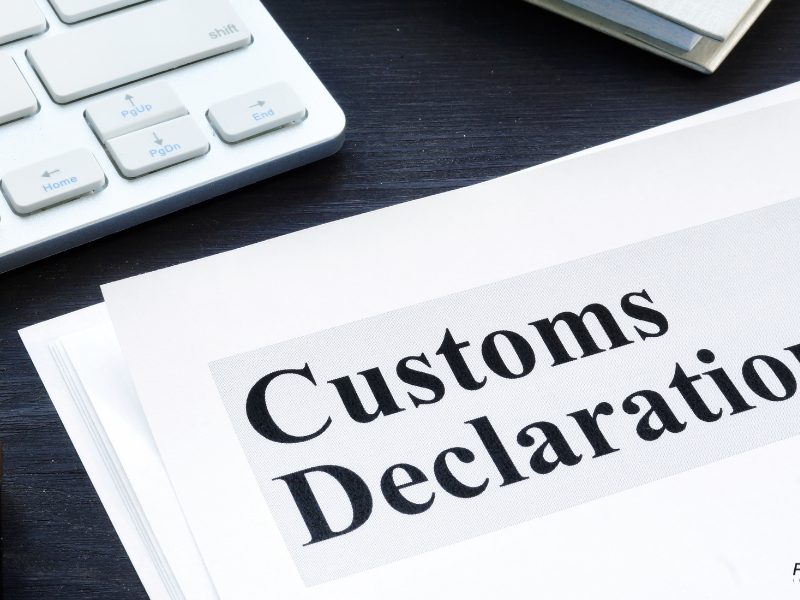Trade between China and the Middle East continues to grow rapidly, but efficient duty handling China to Middle East remains one of the biggest challenges for importers. Incorrect declarations, delayed documentation, and fluctuating tariff rates often lead to unnecessary costs. This comprehensive guide helps businesses understand how to manage duties, reduce customs delays, and improve overall logistics efficiency.
What Does Duty Handling from China to the Middle East Involve?
Duty handling refers to the process of calculating, paying, and clearing customs duties and taxes for goods entering Middle Eastern countries from China. It ensures compliance with local import laws and allows goods to pass borders smoothly.
In this process, importers deal with customs authorities, HS code classification, and tax computation. Common import duties in the Middle East range between 5% and 10%, but some items, like electronics or textiles, may have specific tariffs.
Proper duty handling includes:
- Identifying the correct HS codes
- Calculating customs duties and VAT
- Submitting commercial invoices, packing lists, and certificates of origin
- Coordinating with customs brokers or freight forwarders
Accurate handling not only ensures legal compliance but also avoids costly penalties.
How Customs Duties Are Calculated Across Middle Eastern Countries
Each Middle Eastern country has distinct duty regulations. For instance, UAE, Saudi Arabia, and Qatar follow different tax structures. The following table outlines the general comparison.
| Country | Average Import Duty | VAT Rate | Common Exempt Items | Customs Clearance Time |
|---|---|---|---|---|
| UAE | 5% | 5% | Food, pharma, gold | 1–2 days |
| Saudi Arabia | 5–10% | 15% | Raw materials | 2–3 days |
| Qatar | 5% | 5% | Agricultural goods | 1–2 days |
| Oman | 5% | 5% | Machinery parts | 2–4 days |
| Kuwait | 5% | 5% | Medical items | 2–3 days |
Although the rates seem similar, the clearance process and document verification often differ. Therefore, importers should verify country-specific requirements before shipment.

Key Documents Needed for Duty Handling
Proper documentation is critical in ensuring fast customs clearance and avoiding disputes with local authorities. Below is a checklist commonly required for duty handling between China and Middle Eastern countries:
| Document | Description | Importance |
|---|---|---|
| Commercial Invoice | Specifies value, description, and origin | Determines tax and duty base |
| Packing List | Lists contents and packaging details | Confirms shipment accuracy |
| Bill of Lading / Air Waybill | Proof of transport | Required for clearance |
| Certificate of Origin | Confirms manufacturing location | Influences duty rates |
| Import License | Government approval for restricted goods | Needed for special categories |
| Insurance Certificate | Confirms coverage | Protects against transport risks |
Even minor errors, such as mismatched values or missing signatures, can result in delays or fines.
Shipping Methods and Their Impact on Duty Handling
Selecting the right transportation mode affects not only delivery time but also duty management and total cost. Each option has unique implications for customs declaration and import taxes.
| Shipping Mode | Transit Time | Average Cost (per CBM) | Pros | Cons |
|---|---|---|---|---|
| Sea Freight | 20–30 days | $80–$120 | Economical, high volume | Slower, complex handling |
| Air Freight | 5–7 days | $5–$8/kg | Fast, secure | Expensive, limited space |
| Rail + Sea Combo | 18–22 days | $150–$180 | Balanced cost and speed | Limited route options |
Sea freight dominates large shipments like furniture and machinery, while air freight is ideal for high-value electronics or urgent deliveries. Duty calculation remains the same across methods, but faster shipping helps reduce storage and demurrage costs.

Real Case Examples of Duty Handling from China to the Middle East
Case 1: Electronics Shipment (China to UAE)
- Cargo: 800 LED TVs (20 tons)
- Mode: Sea freight (Shenzhen → Jebel Ali Port)
- Transit Time: 26 days
- Freight Cost: USD 4,200
- Import Duty: 5%
- Total Cost (incl. VAT): USD 4,410
- Result: Cleared within 48 hours after customs inspection.
Case 2: Industrial Machinery (China to Saudi Arabia)
- Cargo: 5 sets of drilling machines
- Mode: Sea freight (Shanghai → Dammam Port)
- Transit Time: 28 days
- Freight Cost: USD 8,000
- Import Duty: 10%
- VAT: 15%
- Result: Total customs taxes amounted to USD 11,200. Clearance completed in 3 days.
Common Challenges in Duty Handling
Despite digital customs systems, importers still face recurring challenges:
- Incorrect HS Code Classification: Leads to overpayment or underpayment of duties.
- Incomplete Documentation: Missing invoices delay customs release.
- Currency Conversion Issues: Fluctuating exchange rates alter duty calculations.
- Changing Regulations: Middle Eastern countries frequently update import laws.
- Port Congestion: Causes storage fees and late deliveries.
However, with accurate recordkeeping and professional freight partners, most of these issues can be avoided.
Strategies to Optimize Duty Handling Efficiency
Businesses can significantly streamline customs processing through proper planning and technology integration. Key strategies include:
- Pre-classify HS codes before shipment.
- Use DDP (Delivered Duty Paid) services to simplify duty settlement.
- Adopt digital documentation platforms for faster submission.
- Consult licensed customs brokers to avoid misclassification.
- Leverage bonded or free zones to defer or minimize duty payments.
For example, importers using Dubai’s Jebel Ali Free Zone can store goods duty-free until re-export, reducing overall costs.
Future Trends in China–Middle East Duty and Logistics
As trade intensifies, duty handling is evolving toward automation. Artificial intelligence and blockchain-based systems are helping authorities verify data faster. Additionally, regional agreements under the Belt and Road Initiative (BRI) promote smoother customs coordination between China and Gulf Cooperation Council (GCC) countries.
In the near future, importers can expect:
- Unified tariff databases for faster classification
- Digital trade corridors linking Chinese ports to Middle Eastern hubs
- Increased transparency through electronic customs systems
Without a doubt, adopting technology and proactive compliance will define future logistics success in this corridor.
Conclusion
In conclusion, efficient duty handling China to Middle East ensures your goods move without unexpected delays or financial risks. By understanding import tariffs, managing documents correctly, and partnering with skilled freight professionals, importers can achieve seamless customs clearance. Moreover, staying informed about regulation changes and leveraging free zones can dramatically reduce total logistics costs.
Ultimately, effective duty handling isn’t just about compliance—it’s a strategic step toward stronger, more profitable trade between China and the Middle East.
- Consult TJ China Freight Forwarding for the lowest quote. They will provide you with reliable, cost-effective service.
FAQ:
Q1.What is the typical import duty when shipping goods from China to the Middle East?
Import duty usually ranges from 5% to 10%, depending on the product’s HS code and destination country’s tariff rules.
Q2.How long does customs clearance usually take for shipments from China to the Middle East?
Customs clearance typically takes one to three days when all documents are correct and payments are made promptly.
Q3.Can importers reduce duties when shipping goods from China to the UAE or Saudi Arabia?
Yes, through free zones, accurate HS classification, and bilateral trade agreements under GCC policies.
Q4.What documents are required for duty handling from China to the Middle East?
A commercial invoice, packing list, bill of lading, and certificate of origin are essential for smooth clearance.
Q5.Do express courier services handle customs duties automatically?
Yes, major couriers like DHL and FedEx manage duties through DDP shipping options that include pre-paid customs.

